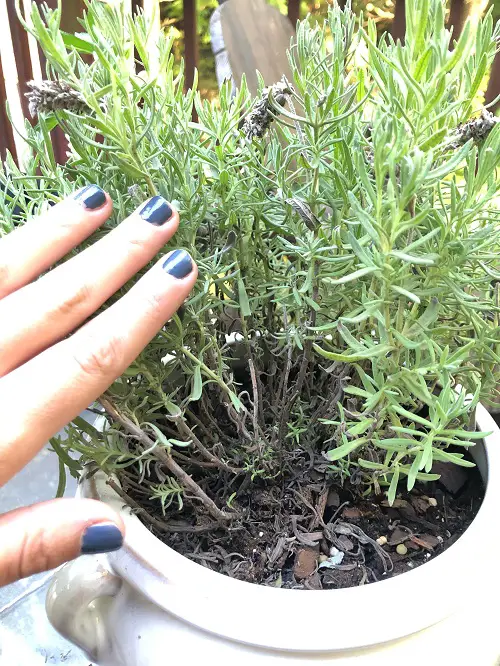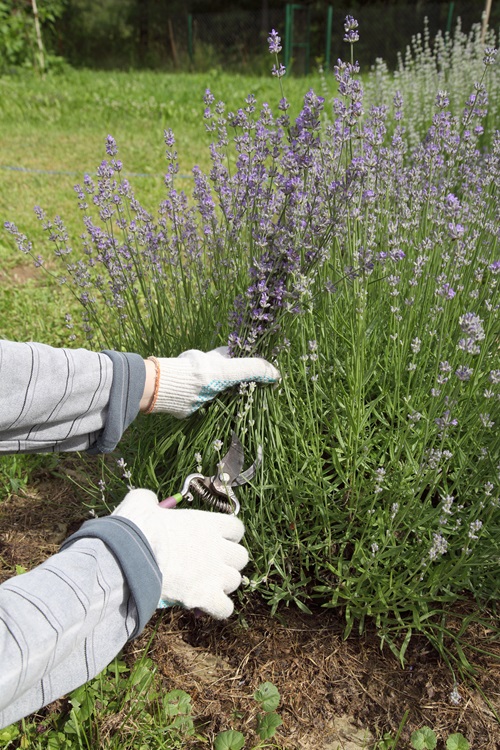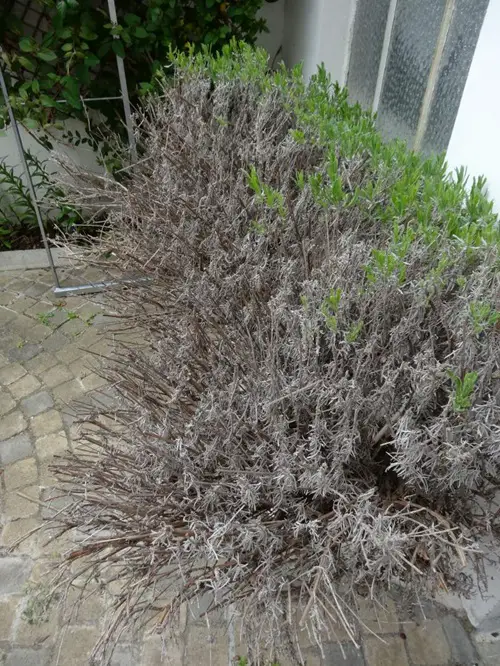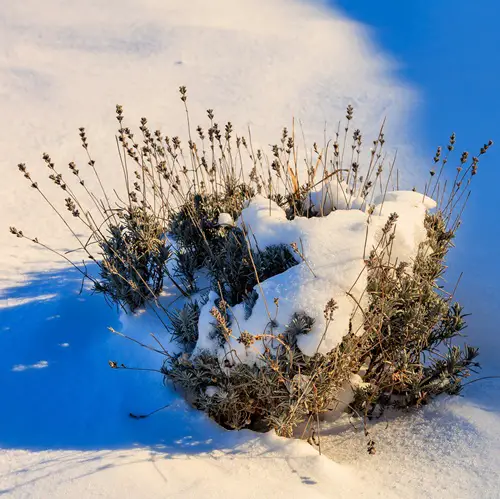If this hardy herb is falling apart, let’s scrutinize its home rather than the plant—here are some Overlooked Reasons Why a Lavender Dies!
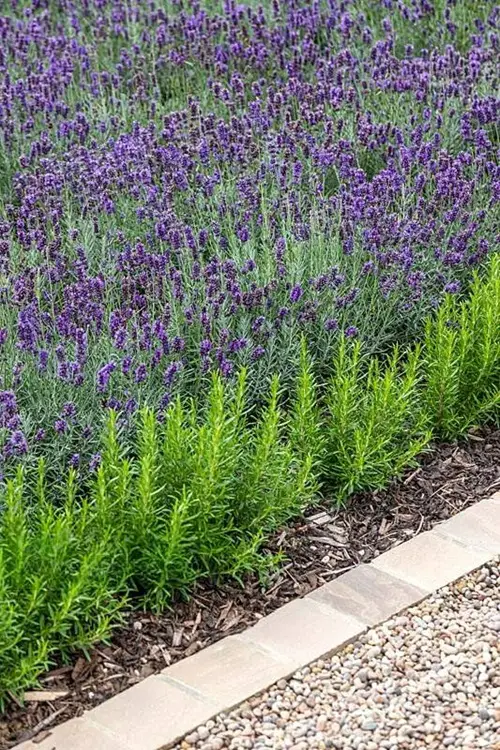
This Mediterranean herb with fragrant purple blooms is the pride of a thriving garden. But when it starts to wilt, it’s time to get to the root of the issue! You can’t save the plant if its roots aren’t happy in their home. Here are some overlooked reasons why a lavender dies!
Most Overlooked Reasons Why a Lavender Dies
1. Growing Lavender in Moisture & Humidity
Native to the dry summers and mild winters of the Mediterranean, lavender (Lavandula) favors dry, well-drained conditions and struggles in moist areas. High moisture, especially around the roots, can lead to root rot and other fungal diseases.
Humidity around the leaves also breeds diseases that weaken lavender over time. This is easily one of the most overlooked reasons why your lavender dies—it’s all too wet!
Solution: Plant lavender in a breezy spot with plenty of morning sunshine. Daytime light helps dry any dew collected overnight and reduces moisture around the leaves, which lowers the risk of fungal diseases. Also, water it sparingly only when the soil seems dry, as overwatering is its biggest enemy!
In excess humidity, ensure your shrub is planted in raised beds or containers with excellent drainage. Here’s how to grow lavender in tropical, humid conditions.
2. Planting in Heavy or Clay-Based Soil
Happy homes for happy roots—once you remember this, your lavender will flourish. Its delicate roots can only survive in loose-draining soil. Heavy, compacted soil holds too much water, suffocating the roots and causing infection and poor nutrition uptake.
Solution: Lavender grows best in sandy or rocky soil that drains quickly. If your garden’s soil is heavy and cloggy, mix in sand, gravel, and perlite to make it breathable.
3. Go Easy on Fertilizers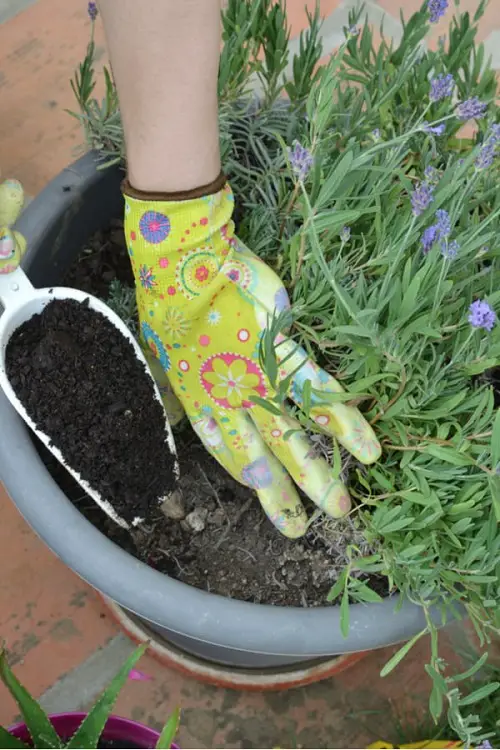
This sun-loving plant isn’t a heavy feeder—on the contrary, too much of it can weaken the plant. Fertilizers high in nitrogen may boost lush, green foliage at the expense of flowers and make it susceptible to diseases and pests.
Note: If you need to fertilize at all, use a low-nitrogen, slow-release fertilizer once in spring. Lavender on the ground generally does best with little or no fertilizer; the plant is adapted to growing in nutrient-poor soil.
For your potted lavenders, it’s best to use a liquid fertilizer like 5-10-10 in half of the manufacturer’s recommended dose every six weeks during the growing season.
4. Applying Mulch that Holds too Much Moisture
While mulching is a great way to insulate your plant from weather extremities, nourish your soil, and improve texture, this practice can be dangerous for lavender. Mulch made of wood chips or shredded leaves retains water and creates dampness, which leads to root rot.
Solution: Mulch with ingredients that drain out excess water. Topping the soil with gravel and small pebbles can help keep the plant’s base dry. If you do mulching, do it without piling anything too close to the stems.
5. Pruning the Wrong Bits
Pruning helps lavender stay compact and bloom better if you know which parts to target. Cutting into its woody parts—the older stems near the base—can damage it and is another reason why a lavender dies.
Once lavender becomes “woody,” it won’t push out fresh growth in that region. Cutting this section too low may stunt or even kill the plant.
Solution: Prune lavender in early spring, right after new growth starts, and aim to trim only about a third of the plant. Focus on the green, flexible parts and avoid the mature, woody sections. After lavender blooms, lightly trim wilted growth to keep it in shape.
6. Not Enough Sunshine
Lavender needs full sun to thrive. If you plant it in the shadowy corners of your garden, it won’t have enough energy to grow healthy. Over time, lavender in low-light conditions will grow leggy with sparse leaves, bloom less, and eventually weaken and die.
Solution: This aromatic plant needs at least six hours of intense direct light daily to flourish. As mentioned above, pick a breathable, airy spot with ample morning light to dry out any mist quickly and avoid crowding the plant.
7. Cold or Frost Damage
Popular varieties like French lavender are sensitive to cold. If you’re growing it in a cold climate without protection, harsh winters and sudden frosts will stress the plant, especially if it has never been exposed to this extreme weather. Your shrub will eventually wilt and die.
This is why it’s important to pick the right variety for your zone!
Solution: English lavenders like ‘Hidcote’ and ‘Munstead,’ and certain hybrid varieties are hardy to zone 5 even, where the temperature drops as low as -20 F (-29 C). Add a protective dry straw mulch, and move potted lavender indoors during frost.
8. Packed Too Close Together
This reason why lavender dies is indeed overlooked and taken lightly—there is no space between the plants! Lavender grows bushy and needs a breeze to keep its foliage dry. When you pack it too tightly, moisture gets trapped, causing mold and mildew.
While lavender is often grown as a hedge, a specimen that is too close to other plants is also more likely to compete for nutrients and sunlight, which can cause weaker growth.
Solution: For lavender hedges, distance plants 1 to 1.5 feet apart to allow sufficient airflow, when growing individually, space lavender plants about 2-3 feet apart.
This encourages good air circulation and gives each plant enough room to grow. Consider a single lavender plant in a container in a garden with limited space rather than multiple plants growing too close together in one spot.
9. Incorrect Soil pH
Lavender prefers neutral to slightly alkaline soil (with a pH of about 6.5-8). Acidic soil can harm lavender by limiting its nutrient uptake. Over time, lavender may weaken and develop fewer blooms if planted in acidic soil.
Solution: Test your soil’s pH before planting lavender. If it’s too acidic, you can amend the soil with lime to make it more alkaline. You can do soil testing at home as well with this hack!
10. Poor Drainage
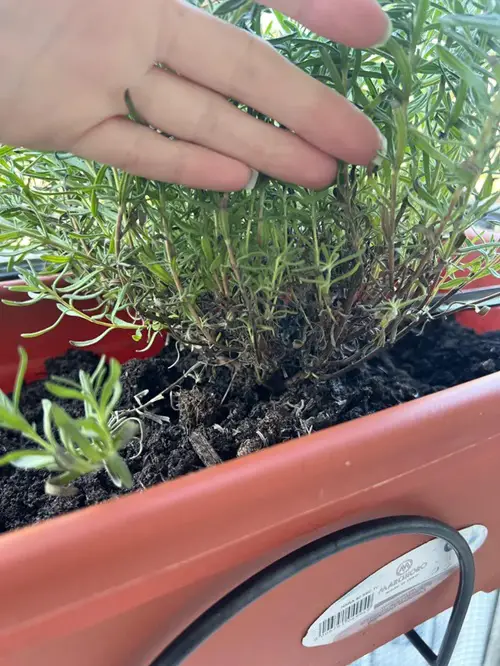
While this aromatic herb thrives as a garden border or hedge, it’s one of the easiest plants to grow in containers—if you give it proper drainage. Water collecting at the bottom due to poor soil and blocked drainage holes leads to root rot.
Solution: Pick a moderate-sized container large enough to support root growth but compact enough to let water pass through. Punch in ample drainage holes, and place a layer of gravel, pebbles, or broken pottery at the pot’s base to allow water flow.
11. Forgetting to Overwinter Lavender
Typically, this plant grows in sunny, moderate weather and prefers a cheerful 60 F (15 C) and above.
You need to overwinter lavender in fall and winter to help it survive the cold. If you live in zones five and above, you can overwinter hardy English and hybrid varieties outdoors.
For cold-sensitive ones like Spanish lavender, which are suited to grow in zones eight and above, you can grow them in pots and bring them indoors to overwinter.
Solution: When it starts to freeze during winter, move potted lavender indoors to a spot with filtered sunlight. For outdoor overwintering, add a layer of straw around the base of the plant or use a breathable fabric wrap to insulate the roots from extreme cold.
12. It’s Not Dying, It’s Resting
As you enter winter, your lavender may look like it’s dying, but it’s only going dormant. This perennial begins losing leaves and flowers to protect itself from losing energy to growth, saving it to hibernate through the cold.
However, some hardy varieties, like English lavender enjoy a layer of snow because it surprisingly insulates the roots and maintains moisture levels around the plant and it resurfaces again in spring with fresh growth.
However, tender varieties like French, Portuguese, or Spanish lavender will die back without protection.
Note: Avoid overwatering to support your lavender during its dormant phase, as the plant is not actively growing. Leave it undisturbed, and trust it will return to its full beauty when temperatures rise again.
Pick the right lavender variety for your climate, and ensure the medium is well-draining, slightly alkaline, and loose. Give room for roots to grow without dampening off, and you’ll have lavender shrubs growing all around in no time!


